If you’re going to start the year off with a bang, you should go all in! Despite this year starting almost the same way as last year, I decided not to let that stop me. Visiting Niagara-On-The-Lake was initially planned for December 2023. Rain stopped that, so we moved it to January to start the new year. Niagara-On-The-Lake is much larger today, but I spend most of my time in the historic old town where we’re visiting today!
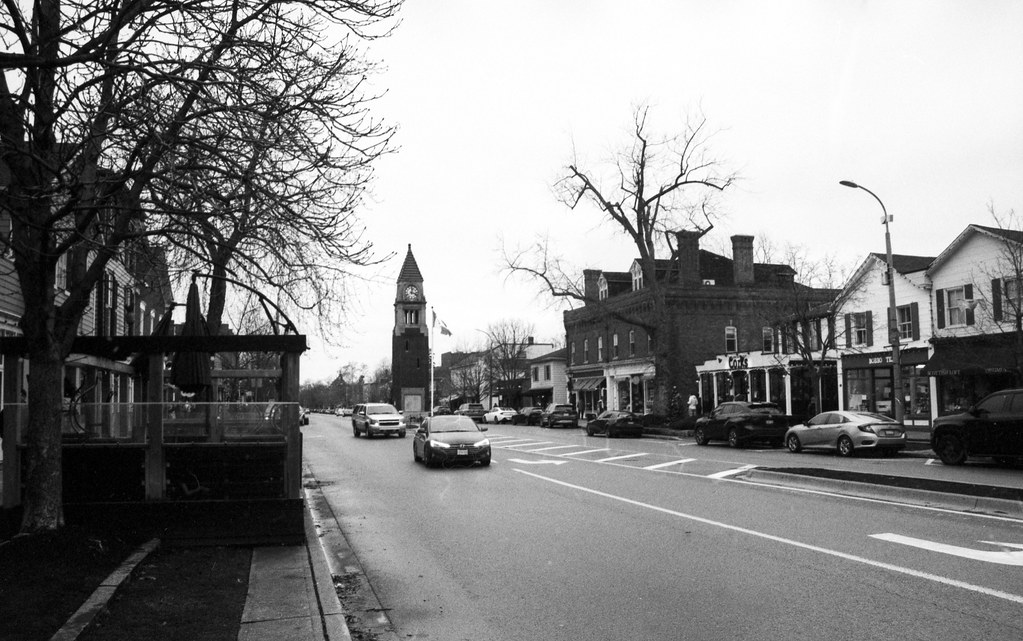
Canon EOS 3000 – Canon Lens EF 28-80mm 1:3.5-5.6 II – Arista EDU.Ultra 200 @ ASA-200 – Zone Imaging 510-Pyro (1+100) 7:30 @ 20C
The charming historic old town of Niagara-On-The-Lake owes its current existence to two key points in local history: the American occupation and destruction of 1813 and a massive economic depression through the middle of the 20th Century. The earliest known humans to settle here were a group known as the Attawonderank, part of a group of Indigenous peoples known to the French as the Neutral Nation; these were driven out in the 1650s by the Haudenosaunee and Seneca during the Beaver Wars. The Mississaugas later drove them out; the Mississaugas ceded the territories to the British Crown in 1781 under the terms of Treaty 381, or the Niagara Purchase. The British purchased a large swath of territory to open it up to settlement by Loyalists who had been displaced during the American Revolution. The area around Niagara-On-The-Lake was used as an overflow for Loyalist families who took shelter across the river at Fort Niagara, most connected with an irregular unit called Butler’s Rangers. This early settlement, called Butlersburg, was around Mississauga Point (today the Niagara-On-The-Lake Golf Course). However, the Royal Navy maintained a naval yard further upriver, centred around Navy Hall. After the war ended, the area became known as West Niagara; when Lieutenant-Governor John Grave Simcoe selected the settlement to serve as the capital of the newly created province of Upper Canada, he renamed the town Newark. However, it only served in that role for a few years before being moved to York (Toronto) in 1797, given the close location to the American frontier. However, the town remained firmly connected to the military, with the Royal Navy and the British Army maintaining a large force at the Naval Establishment and the newly completed Fort George. The first lighthouse on the Great Lakes was completed in 1804 at Mississauga Point, a testament to the town’s key strategic role in the defense of Upper Canada. It became the preferred headquarters of General Isaac Brock and the 49th Regiment of Foot. The town would become the front line when the United States declared war on England in the summer of 1812 and would see an American invasion in the spring of 1813 and occupation. In December of 1813, British victories would see the Americans abandon the town and, through the machinations of the traitor Joseph Wilcox, destroy much of the town as retribution and attempt to build resentment towards the British authorities. It did the opposite and, in an act of retribution, saw the British forces destroy almost all the communities between Fort Niagara and Buffalo and occupy Fort Niagara. During the post-war reconstruction, the entire town shifted to the southwest, relocating several key buildings to remain out of the range of the American guns while building improved defences along the river for a war that never came. By the 1820s, the town enjoyed a great deal of prosperity, being a key commercial port along Lake Ontario and a significant portage stop along the Niagara River, and while that importance declined with the opening of the Second Welland Canal, the military presence and agriculture continued to thrive and see the town’s economy boom. Although this slid into decline in the mid-century when St. Catharines was named the new county seat and much of the commercial traffic shifted to the Third Welland Canal, the arrival of the railway and the increase in tourism that it brought allowed the town to change to a new economic driver. The opening of World War One saw a massive return of the Military as Camp Niagara trained many volunteers (and later conscripts) for the Canadian Expeditionary Force’s initial training before being shipped out overseas to serve on the Western Front. But the post-war period proved less than kind; the depression, crop failure and prohibition killed off any tourism, the railways that the communities depended on to bring in the traffic were shut down, and the tracks were torn up. There were attempts at make-work projects with several historical sites being rebuilt or restored, but more was needed. With no jobs, money, or prospects, the town could not complete any real urban renewal projects that swept the province in the 20th Century, leaving the community with a large inventory of early to mid-19th-century buildings needing restoration. This quickly drew the attention of a group of live theatre lovers who wanted to build on the success of the Stratford Festival. Opening in 1962 in the newly restored 1847 courthouse, the Shaw Festival rekindled the tourism industry throughout the region and quickly spread with new wineries opening up. Soon, the entire downtown was revitalised with more theatre space, restaurants, and charming hotels built on historic properties. The old town became a historic district in 1986 under Provincial designation; federal status was granted in 2004. Today, Niagara-On-The-Lake encompasses more than the historic old town; it also includes the villages of Virgil, Queenston, and St. Davids.

Canon EOS 3000 – Canon Lens EF 28-80mm 1:3.5-5.6 II – Arista EDU.Ultra 200 @ ASA-200 – Zone Imaging 510-Pyro (1+100) 7:30 @ 20C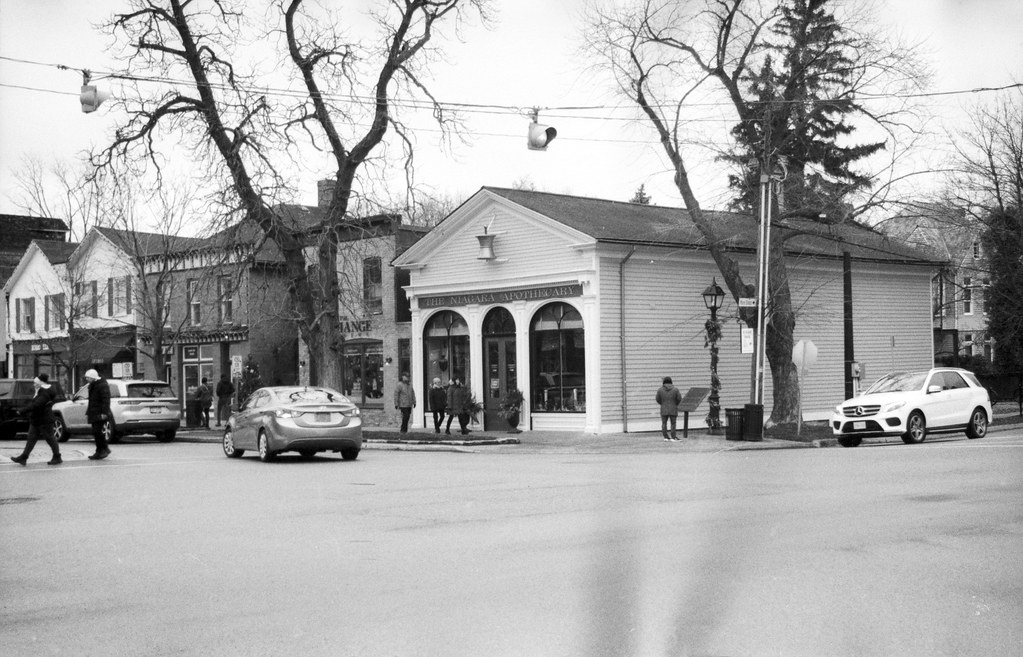
Canon EOS 3000 – Canon Lens EF 28-80mm 1:3.5-5.6 II – Arista EDU.Ultra 200 @ ASA-200 – Zone Imaging 510-Pyro (1+100) 7:30 @ 20C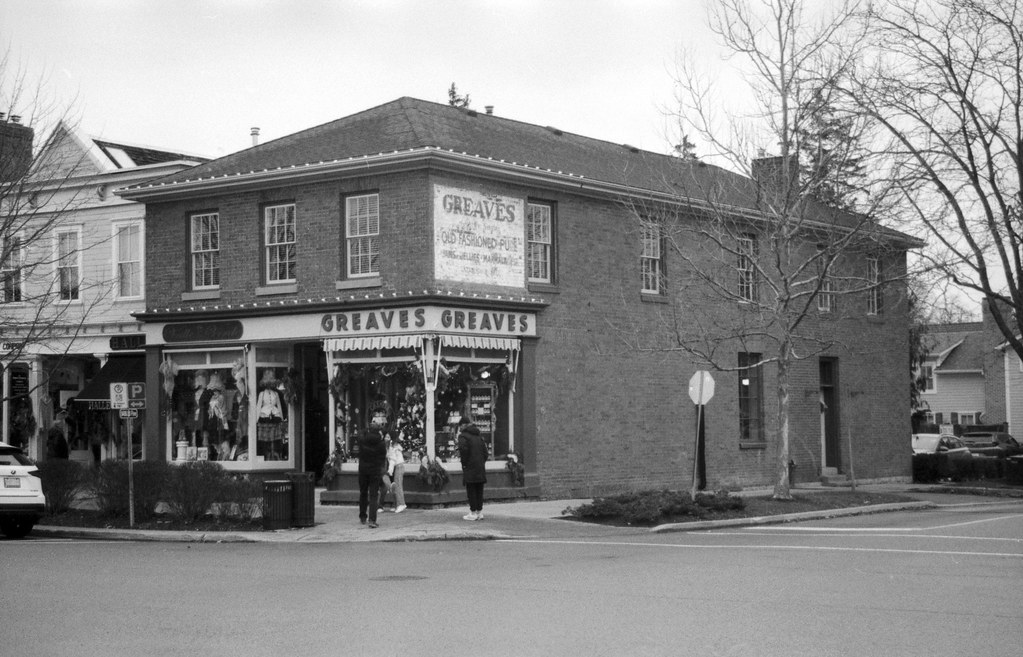
Canon EOS 3000 – Canon Lens EF 28-80mm 1:3.5-5.6 II – Arista EDU.Ultra 200 @ ASA-200 – Zone Imaging 510-Pyro (1+100) 7:30 @ 20C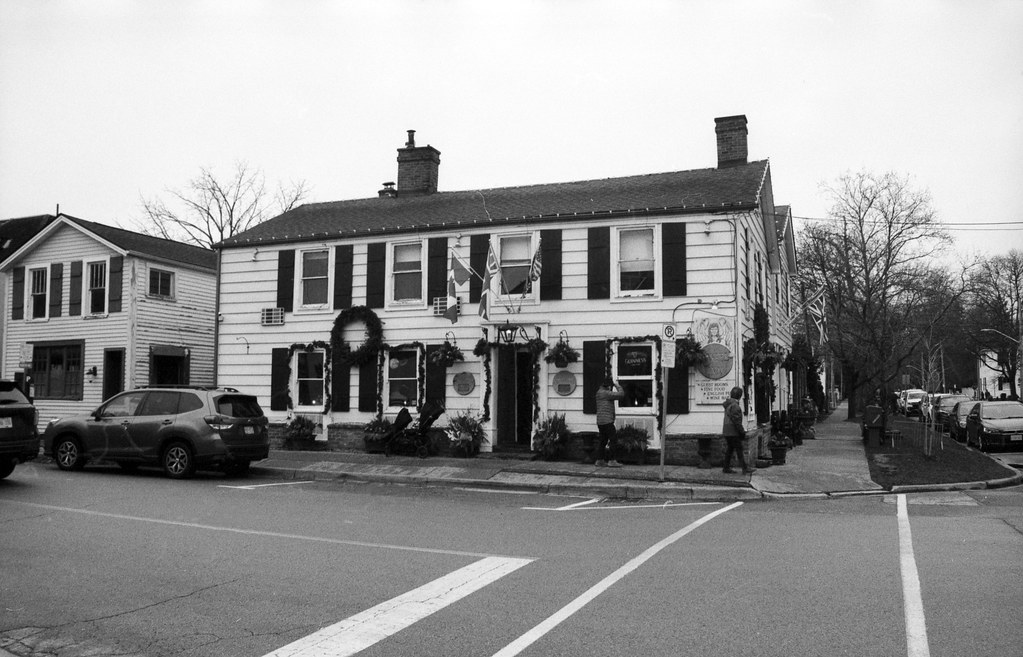
Canon EOS 3000 – Canon Lens EF 28-80mm 1:3.5-5.6 II – Arista EDU.Ultra 200 @ ASA-200 – Zone Imaging 510-Pyro (1+100) 7:30 @ 20C
It’s hard to go back to a place where you’ve photographed many times and pick out some favourites. I had a list of spots in my mind that I wanted to capture, but sometimes the situation could be better. The one thing that you’ll notice that is missing is anything military in nature; these are located further outside of the central core of the Old Town, and given that we got into town later than we usually would, I wasn’t about to drag the family around to places like Fort Mississauga, Navy Hall or Butler’s Barracks. That isn’t fair to them, and the weather wasn’t exactly pleasant, but at least it wasn’t raining. Instead, I focused on the buildings that were exciting downtown. I also made a point of getting places that have some interesting stories connected to them, like the Fanny Rowely House, which most people know as the former home of the Tricia Romance Gallery but is a far more exciting place. It was hard to choose the thirteen images for this post out of posting almost the entire roll!
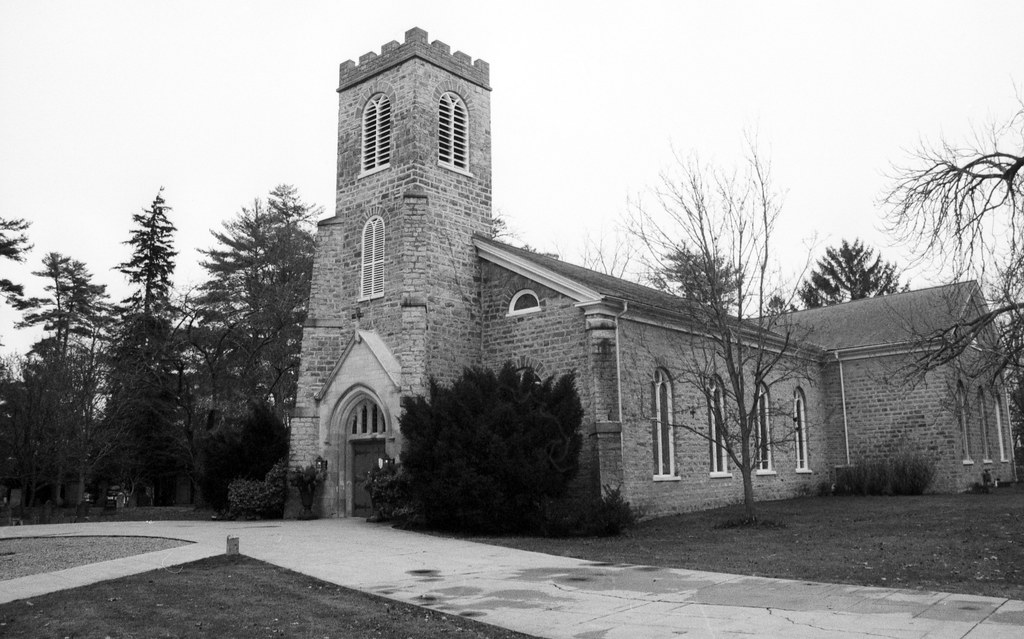
Canon EOS 3000 – Canon Lens EF 28-80mm 1:3.5-5.6 II – Arista EDU.Ultra 200 @ ASA-200 – Zone Imaging 510-Pyro (1+100) 7:30 @ 20C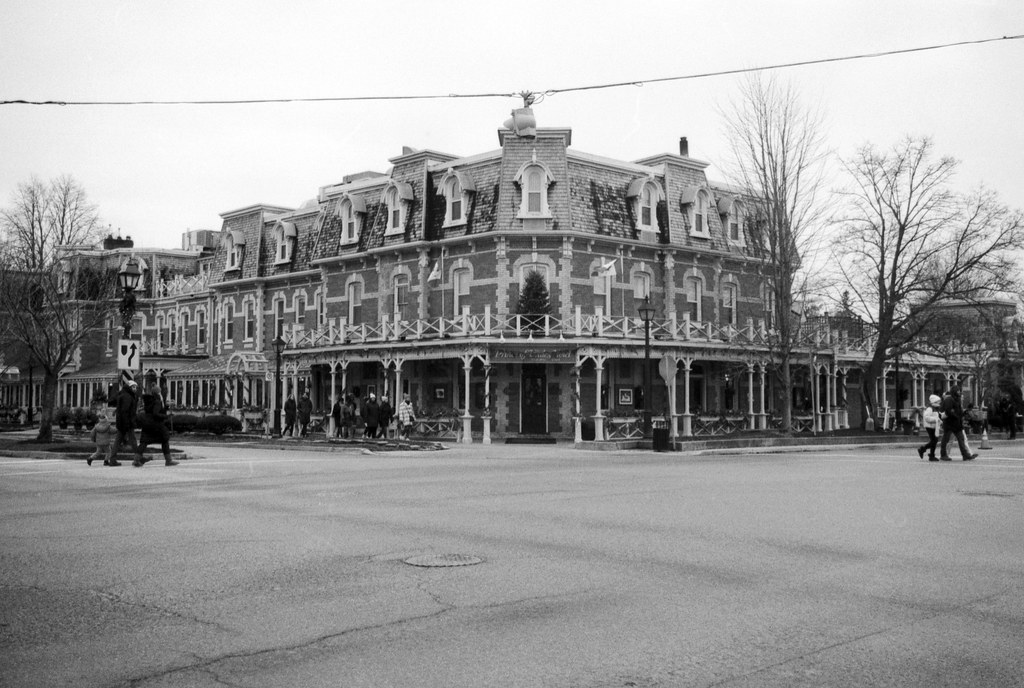
Canon EOS 3000 – Canon Lens EF 28-80mm 1:3.5-5.6 II – Arista EDU.Ultra 200 @ ASA-200 – Zone Imaging 510-Pyro (1+100) 7:30 @ 20C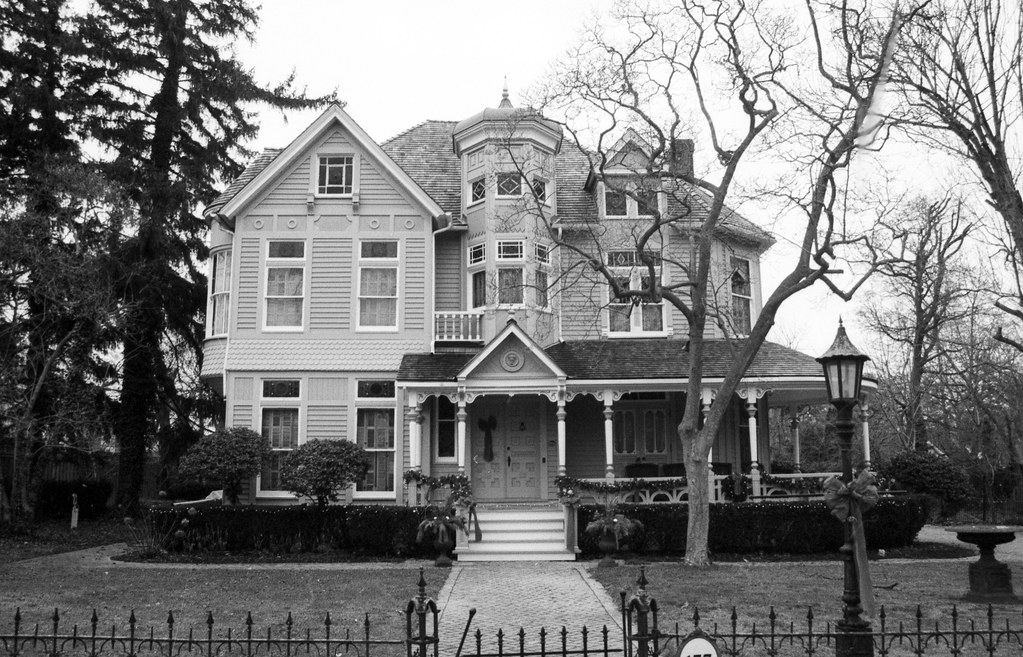
Canon EOS 3000 – Canon Lens EF 28-80mm 1:3.5-5.6 II – Arista EDU.Ultra 200 @ ASA-200 – Zone Imaging 510-Pyro (1+100) 7:30 @ 20C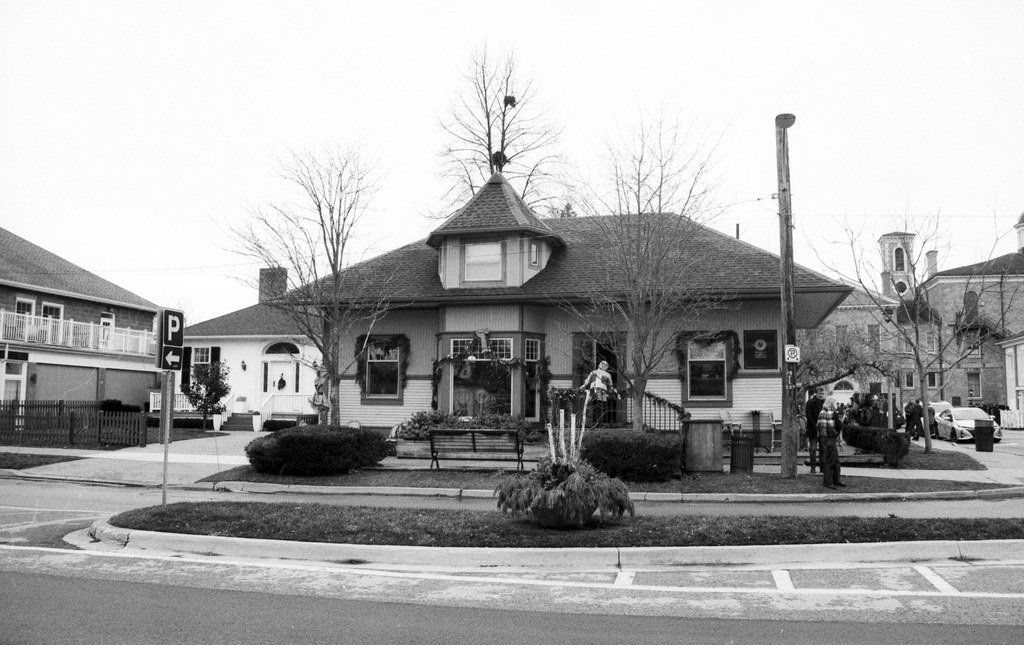
Canon EOS 3000 – Canon Lens EF 28-80mm 1:3.5-5.6 II – Arista EDU.Ultra 200 @ ASA-200 – Zone Imaging 510-Pyro (1+100) 7:30 @ 20C
The one thing I was certainly glad of this year is having a film stock that is slightly faster than last year. While we were supposed to see more sun, the day was overcast but bright, so shooting an ASA-200 film gave me that extra boost. The bright overcast allowed for a more diffused light, which is great because the sun can hit some key buildings hard during this time of the year. My original plan had been to shoot slightly over at ASA-160, but I went for the full box speed of ASA-200. For the developer, to help get the best results, I went with 510-Pyro. I’ve had trouble with Arista 200 in the past. Get results. To give it the best chance to set the tone for the rest of the year. And it didn’t disappoint; the images have that brightness that comes with using 510-Pyro, even with the overcast conditions that were far darker than I realised. But there are some places where the focus is missed, or there’s a camera shake, probably because I was wearing gloves too thick to operate the camera efficiently.
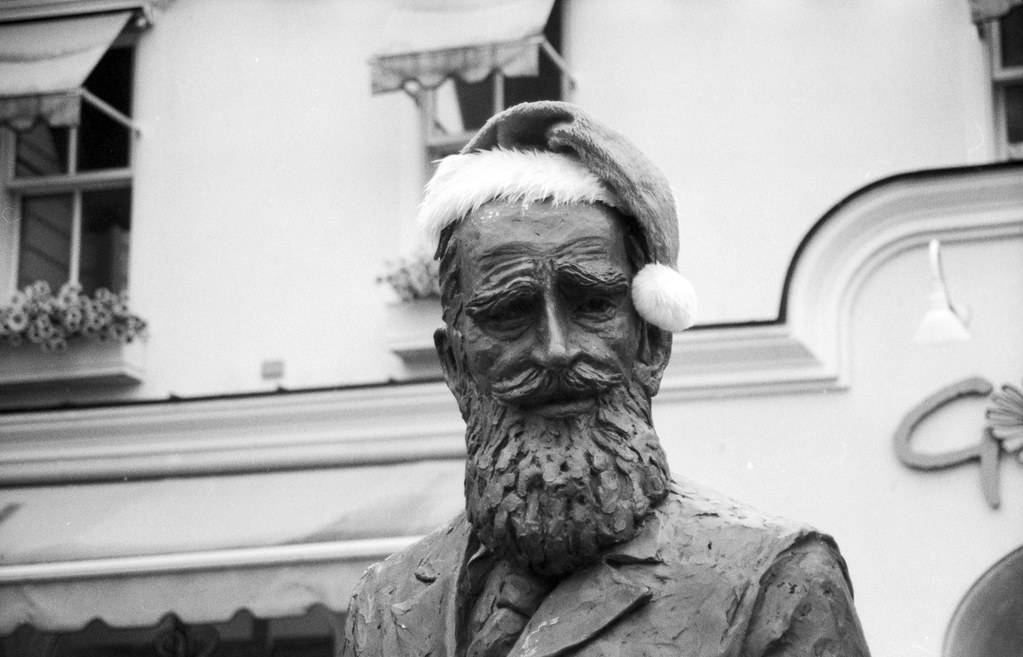
Canon EOS 3000 – Canon Lens EF 28-80mm 1:3.5-5.6 II – Arista EDU.Ultra 200 @ ASA-200 – Zone Imaging 510-Pyro (1+100) 7:30 @ 20C
Canon EOS 3000 – Canon Lens EF 28-80mm 1:3.5-5.6 II – Arista EDU.Ultra 200 @ ASA-200 – Zone Imaging 510-Pyro (1+100) 7:30 @ 20C
Canon EOS 3000 – Canon Lens EF 28-80mm 1:3.5-5.6 II – Arista EDU.Ultra 200 @ ASA-200 – Zone Imaging 510-Pyro (1+100) 7:30 @ 20C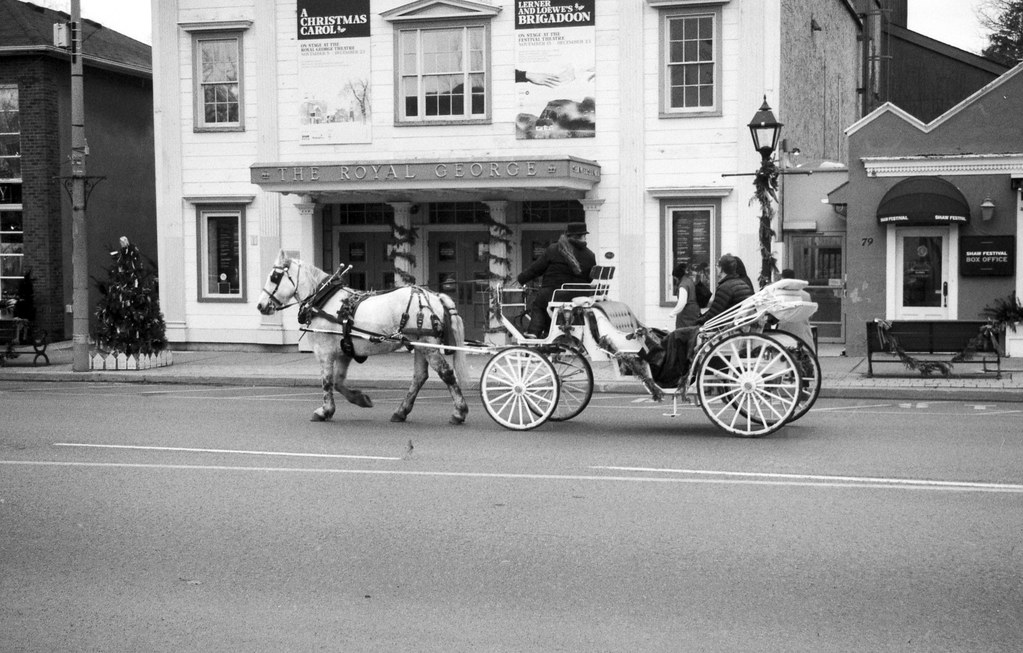
Canon EOS 3000 – Canon Lens EF 28-80mm 1:3.5-5.6 II – Arista EDU.Ultra 200 @ ASA-200 – Zone Imaging 510-Pyro (1+100) 7:30 @ 20C
There is one good thing about not including some of the military locations in this post, it means that if I want to go back to Niagara-On-The-Lake to take in a reenactment at Fort George, I can include that in a future month for the FFP! And yes, the cold dull, snowless look of NoTL isn’t the best, but hopefully it has inspired you to take in this beautiful community later in the year and under better conditions. One of my favourite times of year to visit the town is in the winter, like in 2022 when I stopped in after a major winter storm which made the whole town magical, albet windy. For Feburary I’ll be visiting Westfield Heritage Centre on a lovely day off in the middle of the week in honour of their 60th Anniversary!